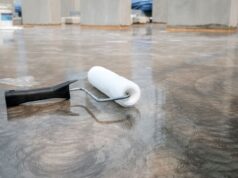
You have decided to climb Mount Kilimanjaro and you want to make sure your trip is going to be successful. To increase your chance of getting that greatly desired photo of yourself on top of the Uhuru Peak, here are some tips that can help you realize your plan.
Stay longer
If you want a higher chance of success and lower your risk of altitude sickness, make sure you plan a longer trip rather than a short one. When climbing Mount Kilimanjaro, your chances of success will increase considerably depending on the number of days you are going to spend on the mountain. People plan for a 9-day climb that has the highest success rate, at 90%. This success rate decreases to 65% for 7-day trips, 50% for 7-day, and 30% for 6-day routes. Usually, people will choose a much shorter trip so they can save money or to give themselves a harder challenge. However, if a longer journey increases your chance of success, it is probably much more affordable to add an extra day to your journey rather than traveling back to Tanzania for a second time to try the climb again. Moreover, Kilimanjaro is challenging enough as it is, there is no need to make it harder.
Train

Kilimanjaro is a strenuous climb and it is pretty demanding. The altitude alone increases the difficulty of the route considerably. The best way to prepare for Mount Kilimanjaro is by hiking because that is what you will be mostly doing on the mountain. While the bigger part of your training should be hiking, you can also do other exercises such as weightlifting and running.
Adding a backpack with a bunch of stuff in it for the weight for your hiking will also help you prepare for the journey. If you do not have a lot of experience with hiking, you can start with some shorter walks and build it up to a longer one. On Kilimanjaro, you will probably be hiking for about 5 to 6 hours a day and on summit day about 13 to 15 hours, so you will want to prepare for this difficult task.
If you are going to be Climbing-Kilimanjaro, you should properly plan your trip.
Water is very important

At these high levels of altitude, you will dehydrate much faster. Dehydration can increase the chance of overall fatigue, headaches, grouchiness, and Acute Mountain Sickness. Drink plenty of water. It is pretty common for a lot of climbers to get a slight headache because of the change of altitude. Drinking enough amounts of water can help you avoid the added discomfort. Water is often collected from nearby mountain streams and treated with water purification tablets.
No need to rush
While climbing Mount Kilimanjaro you will hear the phrase “pole, pole” all the time. This means slowly, softly, quietly, be calm or gently in Swahili. When taking a serious challenge like Kilimanjaro, remember to take it steady and slow. Taking the journey with a slow and calm tempo can ensure the success of your climb. Because of the low levels of oxygen in the mountain, you will need to be gentle to your body since it will take some time it can get used to the lack of oxygen.









